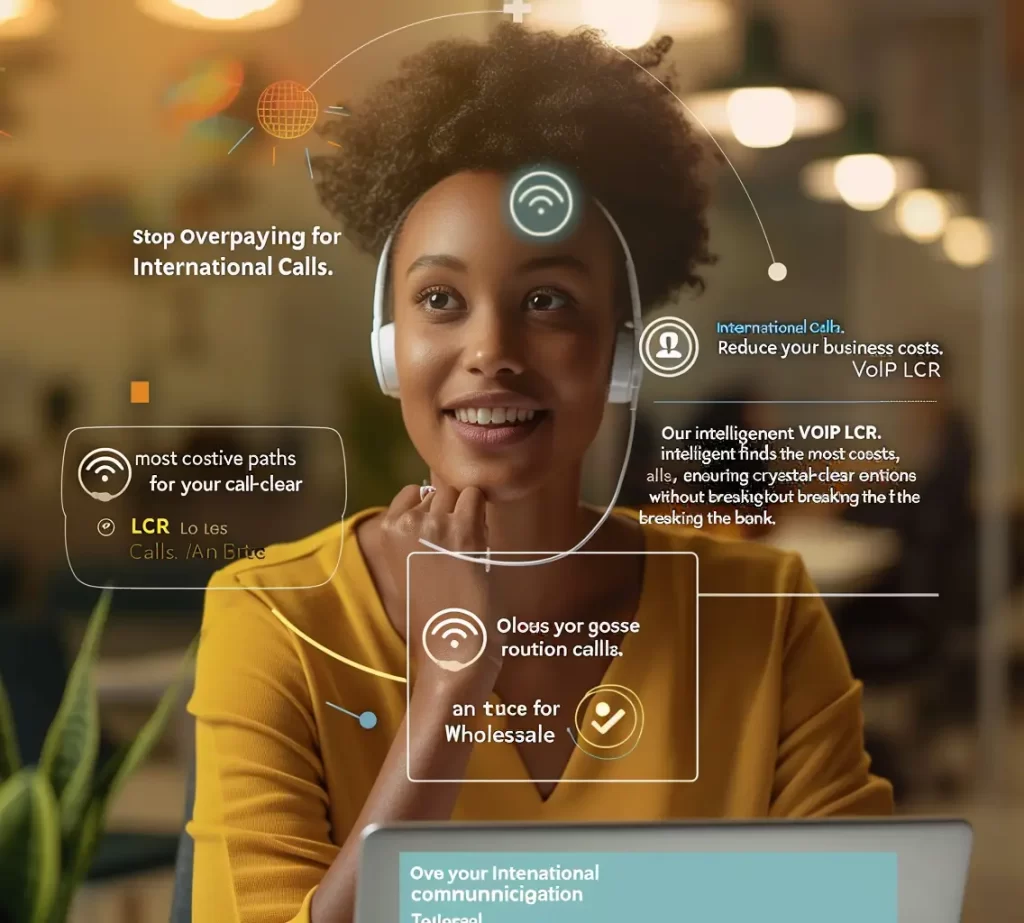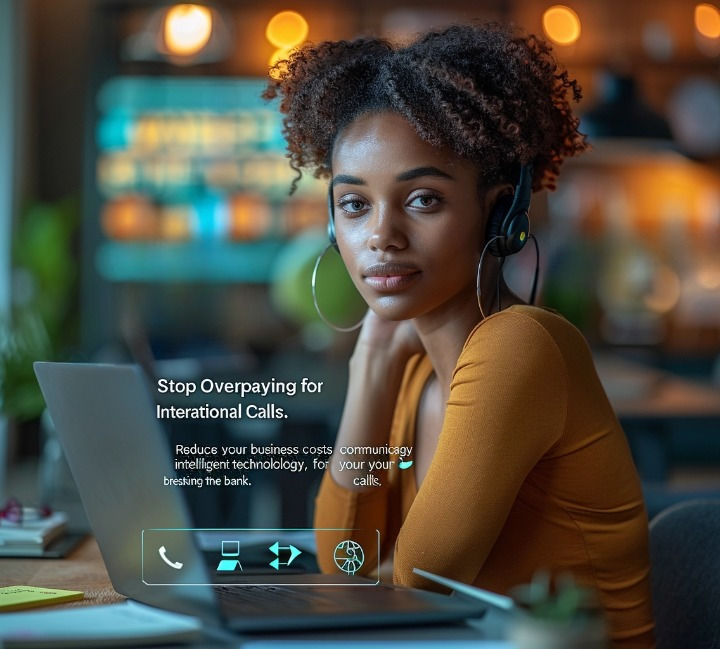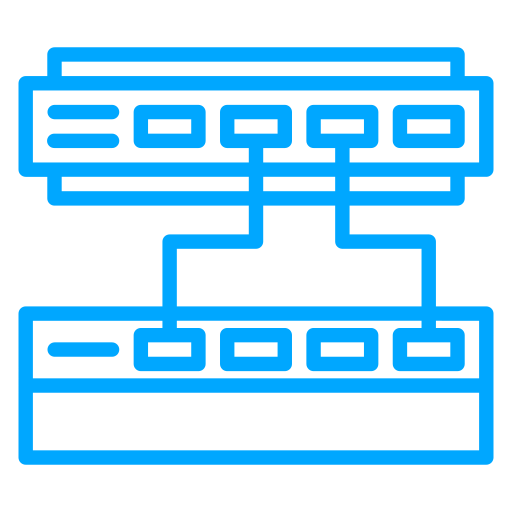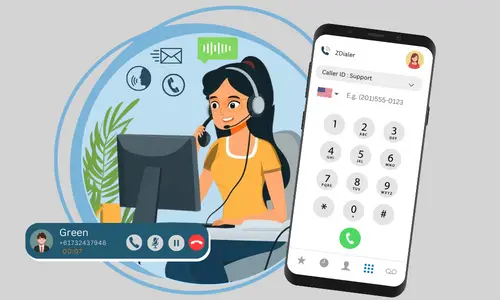Understanding the Core of Wholesale VoIP LCR
Wholesale VoIP LCR is a methodology applied in telecommunications to optimize the cost-efficiency of voice call routing through the internet. This process involves selecting the most economical pathway for a call from a range of available carriers, balancing considerations such as cost, call quality, and network reliability.

How Wholesale VoIP LCR Functions ?
Wholesale VoIP LCR employs a combination of technologies and algorithms to dynamically evaluate and choose the most cost-effective route for each call. Key elements in this system include:

Wholesale VoIP LCR Core Components
 Softswitch Call Routing: Act as central hubs for managing call routing, facilitating the decision-making process.
Softswitch Call Routing: Act as central hubs for managing call routing, facilitating the decision-making process.  Carrier Cost and Quality Databases: Database repositories that store detailed information on carrier rates, quality metrics, and network availability.
Carrier Cost and Quality Databases: Database repositories that store detailed information on carrier rates, quality metrics, and network availability.  Call Quality Monitoring and Evaluation: Systems that continuously assess the quality of calls to ensure adherence to predefined standards.
Call Quality Monitoring and Evaluation: Systems that continuously assess the quality of calls to ensure adherence to predefined standards. Components Integral to VoIP LCR

Carrier - Grade Softswitches
Essential for orchestrating the flow of calls based on LCR criteria, dynamically adjusting routes to maintain quality of service.

Routing Tables and Databases
Contain updated carrier information, crucial for making routing decisions that optimize cost and efficiency.

Quality of Service Monitoring
Ensures the chosen routes meet the desired call quality parameters.Access to marketing materials and sales tools.
Wholesale VoIP LCR Strategies

Percentage Routing: Distributes call traffic among carriers based on specified percentages.

Quality-Based Routing: Selects carriers primarily on the quality of service they can provide

Fixed Routing : Directs calls through a predetermined carrier route, often used for specific agreements or quality reasons.

Geographic Routing: Geographic routing optimizes call quality by selecting carriers closer to the caller or recipient, minimizing latency.

Time-Based Routing: Adjusts routing decisions based on the time of day, day of the week, or other temporal factors, such as peak hours or holidays, to optimize cost-effectiveness.


Setting up an effective
LCR system involves
Assessing potential carriers for their rates, service quality, and reliability.
Implementing the necessary softswitches and routing databases capable of dynamic LCR.
Regularly updating routing choices based on real-time carrier performance and rate changes.
Tracking call volumes, patterns, and quality metrics to ensure optimal performance and identify any issues or areas for improvement.
Utilizing advanced analytics and reporting tools to analyze call data, identify trends, measure key performance indicators, and gain insights into network efficiency, customer behavior, and market dynamics, informing strategic decision-making and optimization efforts.
The Future of Wholesale VoIP: Cost Savings
and Innovation with LCR

Future Directions in Wholesale VoIP LCR
Advancements in technology, such as artificial intelligence (AI) and machine learning, are poised to further enhance LCR systems. These technologies are expected to improve the precision of routing decisions, factoring in real-time data analytics for optimized cost savings and call quality.

The Importance of Routing Strategies in VoIP
Routing in VoIP is not one-size-fits-all; it requires careful consideration of business needs, call volume, and quality expectations. Whether through percentage, quality-based, or fixed routing, the goal remains to ensure efficient, reliable voice communication.

The Role of QoS in VoIP LCR
Quality of Service (QoS) monitoring remains a critical aspect, ensuring that despite the focus on cost reduction, call quality does not suffer. Effective QoS mechanisms are vital for maintaining customer satisfaction and service reliability.

Navigating Regulatory and Compliance Aspects
Adhering to regulatory requirements and industry standards is essential in the deployment and operation of Wholesale VoIP LCR systems. Compliance ensures legal operation and maintains the integrity of voice communication services.
Case Study
Background
A multinational corporation aimed to cut operational costs while maintaining call quality, dealing with the complexity of managing diverse call traffic across global destinations efficiently.
Objective
To implement a Wholesale VoIP Least Cost Routing (LCR) system that would optimize call routing based on cost, quality, and availability, thereby reducing expenses and maintaining high-quality voice communication.
Solution
The corporation deployed a Wholesale VoIP LCR solution, integrating carrier-grade softswitches and advanced routing algorithms. The system was designed to dynamically select the most cost-effective routes from a pool of carriers while ensuring the quality of service through continuous QoS monitoring.
Implementation
The corporation successfully implemented Wholesale VoIP LCR, leveraging carrier-grade softswitches and advanced routing algorithms. This resulted in a 30% reduction in voice communication expenses while maintaining or improving call quality.
Outcome
In the initial quarter, the company saw a notable 30% drop in voice communication expenses with maintained or enhanced international call quality. The Wholesale VoIP LCR system allowed adaptable routing for continued optimization.
Conclusion
The implementation of Wholesale VoIP LCR enabled the corporation to achieve its goal of reducing communication costs while ensuring high call quality, demonstrating the effectiveness of LCR in managing and optimizing international voice traffic.
FAQs
What exactly is Wholesale VoIP LCR?
Wholesale VoIP Least Cost Routing (LCR) is a method used in telecommunications to route voice calls over the internet by selecting the most cost-effective path among multiple carriers, without compromising on quality or reliability.
How does Wholesale VoIP LCR determine the most cost-effective route?
The LCR system utilizes algorithms that analyze various factors such as carrier rates, call quality metrics, and network availability to dynamically select the optimal route for each call.
What are the key components of a Wholesale VoIP LCR system?
Key components include carrier-grade softswitches for managing call routing, routing tables and databases with carrier information, and Quality of Service (QoS) monitoring systems to ensure call quality.
Can Wholesale VoIP LCR improve call quality?
Yes, by considering quality metrics in the routing decision process, LCR can select routes that not only are cost-effective but also maintain or enhance call quality.
Is Wholesale VoIP LCR suitable for businesses of all sizes?
Absolutely. Wholesale VoIP LCR offers scalable solutions that can be tailored to the specific needs and call volumes of businesses, whether small, medium, or large.
How can I set up an LCR system for my business?
Setting up an LCR system typically involves evaluating and selecting carriers, deploying the necessary technological infrastructure like softswitches, and implementing routing algorithms that support LCR. Continuous monitoring and optimization are also crucial steps in the process.
What future developments can we expect in Wholesale VoIP LCR?
Future developments may include the integration of AI and machine learning to further refine routing decisions, predictive analytics for more accurate cost and quality optimization, and enhanced interoperability with emerging telecommunications technologies.
How does Wholesale VoIP LCR handle call quality?
Wholesale VoIP LCR systems typically incorporate Quality of Service (QoS) monitoring and evaluation mechanisms to ensure that call quality is maintained at predefined standards. The routing algorithms take into account real-time quality metrics, such as jitter, packet loss, and latency, to dynamically select routes that offer the best possible call quality while still optimizing for cost-effectiveness.
Can Wholesale VoIP LCR be integrated with existing telephony systems?
Yes, Wholesale VoIP LCR solutions can often be integrated with existing telephony systems, such as legacy PBX systems or IP-PBXs. This integration typically involves deploying a softswitch or session border controller (SBC) that acts as a gateway between the existing system and the VoIP network, enabling the LCR functionality to be utilized for outbound calling.
How frequently are routing tables and carrier data updated in Wholesale VoIP LCR?
In most Wholesale VoIP LCR systems, the routing tables and carrier data are updated on a regular basis, often multiple times per day or even in real-time. This frequent updating ensures that the LCR algorithms have access to the most current information on carrier rates, network availability, and quality metrics, allowing for optimal routing decisions to be made based on the latest data.













